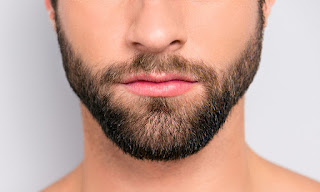Beard Hair Transplant: A Step-by-Step Guide
Introduction
Are you tired of having a patchy beard or struggling to grow facial hair? A Beard Hair Transplant in Saudi Arabia might be the solution you've been looking for. This comprehensive guide will take you through the step-by-step process of a beard hair transplant, helping you understand what to expect and how to achieve the full and robust beard you desire.
Understanding Beard Hair Transplantation
What is a Beard Hair Transplant?
A beard hair transplant is a surgical procedure that involves harvesting hair follicles from a donor site (usually the back of the scalp) and transplanting them into the beard area. This procedure helps individuals with thin or patchy beards achieve a fuller and denser facial hair growth.
Who is an Ideal Candidate for a Beard Hair Transplant?
Ideal candidates for a beard hair transplant are individuals who have:
Thin or patchy beard growth
Scarring or permanent hair loss in the beard area
Genetic factors or hormonal imbalances affecting facial hair growth
Benefits of a Beard Hair Transplant
A beard hair transplant offers several benefits, including:
Improved confidence and self-esteem
Enhanced facial aesthetics
Ability to grow a full and well-defined beard
Permanent and natural-looking results
Preparing for a Beard Hair Transplant
Choosing a Qualified and Experienced Surgeon
Selecting a qualified and experienced surgeon is crucial for a successful beard hair transplant. Look for a surgeon who specializes in hair restoration procedures and has a proven track record of delivering excellent results.
Initial Consultation and Evaluation
During the initial consultation, the surgeon will evaluate your beard area, discuss your expectations, and explain the transplantation process. They will also assess the donor site's suitability and determine the number of grafts required for optimal results.
Preoperative Guidelines
Before the procedure, you may need to follow certain guidelines, such as avoiding blood-thinning medications, smoking, and alcohol consumption. Your surgeon will provide you with specific instructions to ensure a smooth and successful surgery.
The Beard Hair Transplant Procedure
Anesthesia and Donor Hair Extraction
The beard hair transplant procedure begins with administering local anesthesia to ensure your comfort during the surgery. The surgeon will then extract hair follicles from the donor site using the Follicular Unit Extraction (FUE) technique.
Follicular Unit Extraction (FUE) Technique
The FUE technique involves individually extracting hair follicles from the donor area using a specialized micro-punch tool. These follicles are carefully selected to match the natural angle and direction of beard hair growth, ensuring a seamless and natural-looking result.
Transplantation of the Donor Hair
Once the hair follicles are extracted, the surgeon will make tiny incisions in the beard area and meticulously transplant the donor hair follicles. They will strategically place the grafts to achieve a natural density and aesthetic outcome.
Recovery and Postoperative Care
Postoperative Instructions
After the beard hair transplant, your surgeon will provide detailed postoperative instructions. These may include guidelines for washing your beard, avoiding direct sunlight, and refraining from strenuous activities for a certain period.
Managing Discomfort and Swelling
Mild discomfort and swelling are common after the procedure. Your surgeon may prescribe pain medications or recommend cold compresses to alleviate any discomfort. It is essential to follow their instructions to ensure a smooth recovery.
Caring for the Transplanted Hair
To promote proper healing and hair growth, you should follow a gentle hair care routine recommended by your surgeon. Avoid pulling or scratching the transplanted hair, and use mild products specifically designed for post-transplant care.
Achieving Optimal Results
Patience and Hair Growth Timeline
It's important to have realistic expectations and understand that hair growth after a beard hair transplant takes time. The transplanted hair will initially shed, but new hair will start growing within a few months. It may take up to a year to see the full results of the procedure.
Maintaining and Styling Your Beard
Once the transplanted hair starts growing, you can style and groom your beard as desired. Regular trimming and shaping will help maintain the desired length and shape. It's important to consult with your surgeon for specific instructions tailored to your individual case.
Potential Complications and Risks
While a beard hair transplant is generally safe and well-tolerated, there are potential risks involved, including infection, scarring, and temporary shock loss. Choosing a skilled surgeon and following postoperative care instructions can significantly minimize these risks.
Conclusion
A beard hair transplant is an effective solution for individuals seeking a fuller and more robust beard. By following the step-by-step process outlined in this guide, you can understand the procedure, prepare adequately, and achieve optimal results. Remember to consult with a qualified surgeon to determine if a beard hair transplant is the right option for you.



Comments
Post a Comment